The 1977 Toyota Celica stands as one of the most iconic sports cars to emerge from Japan’s automotive golden age. We’ve watched this sleek coupe capture hearts for decades with its perfect blend of affordability reliability and undeniable style that defined an entire generation of driving enthusiasts.
When Toyota unleashed the second-generation Celica in 1977 they didn’t just create another sports car – they crafted a legend. We’re talking about a vehicle that transformed the American sports car industry forever offering performance that rivaled European competitors at a fraction of the cost. The ’77 Celica’s distinctive fastback design and innovative engineering made it an instant classic that still turns heads today.
Whether you’re a seasoned collector hunting for your next restoration project or simply curious about automotive history the 1977 Toyota Celica deserves your attention. We’ll explore what made this particular model year so special and why it continues to command respect among car enthusiasts worldwide.
Toyota Celica 1977: A Classic Sports Car Overview
The 1977 Toyota Celica stands as a pivotal moment in Japanese automotive engineering that redefined affordable performance. Built on Toyota’s TA40 platform, this second-generation model featured a distinctive fastback silhouette and aggressive front end design that captured American buyers’ attention immediately.
Engine options for the 1977 model year included three distinct powerplants that catered to different performance preferences:
| Engine Type | Displacement | Power Output | Transmission Options |
|---|---|---|---|
| 2T-C | 1.6L I4 | 96 hp | 4-speed manual, 3-speed automatic |
| 3T-C | 1.8L I4 | 97 hp | 4-speed manual, 3-speed automatic |
| 20R | 2.2L I4 | 96 hp | 5-speed manual, 3-speed automatic |
Exterior styling elements distinguished the 1977 Celica from its predecessor through bold design choices. Chrome bumpers wrapped around integrated marker lights while dual round headlights created an unmistakable front profile. Side vents positioned behind the front wheels added functional cooling while improving the car’s sporty appearance.
Interior appointments reflected Toyota’s commitment to driver-focused ergonomics during this era. Bucket seats provided adequate support for spirited driving while a three-spoke steering wheel offered precise control feedback. Dashboard instrumentation featured clear analog gauges that included tachometer, speedometer and fuel level indicators positioned directly in the driver’s line of sight.
Performance characteristics of the 1977 Celica delivered competitive acceleration figures against European rivals. Quarter-mile times ranged from 16.8 to 18.2 seconds depending on engine choice and transmission configuration. Top speeds reached 105 mph with the 20R engine while fuel economy averaged 22 mpg in combined driving conditions.
Production numbers for 1977 reached 181,295 units globally with North American markets receiving approximately 60% of total output. Manufacturing took place at Toyota’s Tahara plant in Japan where quality control standards exceeded industry benchmarks for fit and finish tolerances.
Market positioning placed the 1977 Celica between entry-level economy cars and premium European sports coupes. Base model pricing started at $4,499 while fully equipped GT variants reached $5,799, making Japanese performance accessible to middle-class buyers who previously couldn’t afford similar European alternatives.
Design and Styling of the 1977 Celica
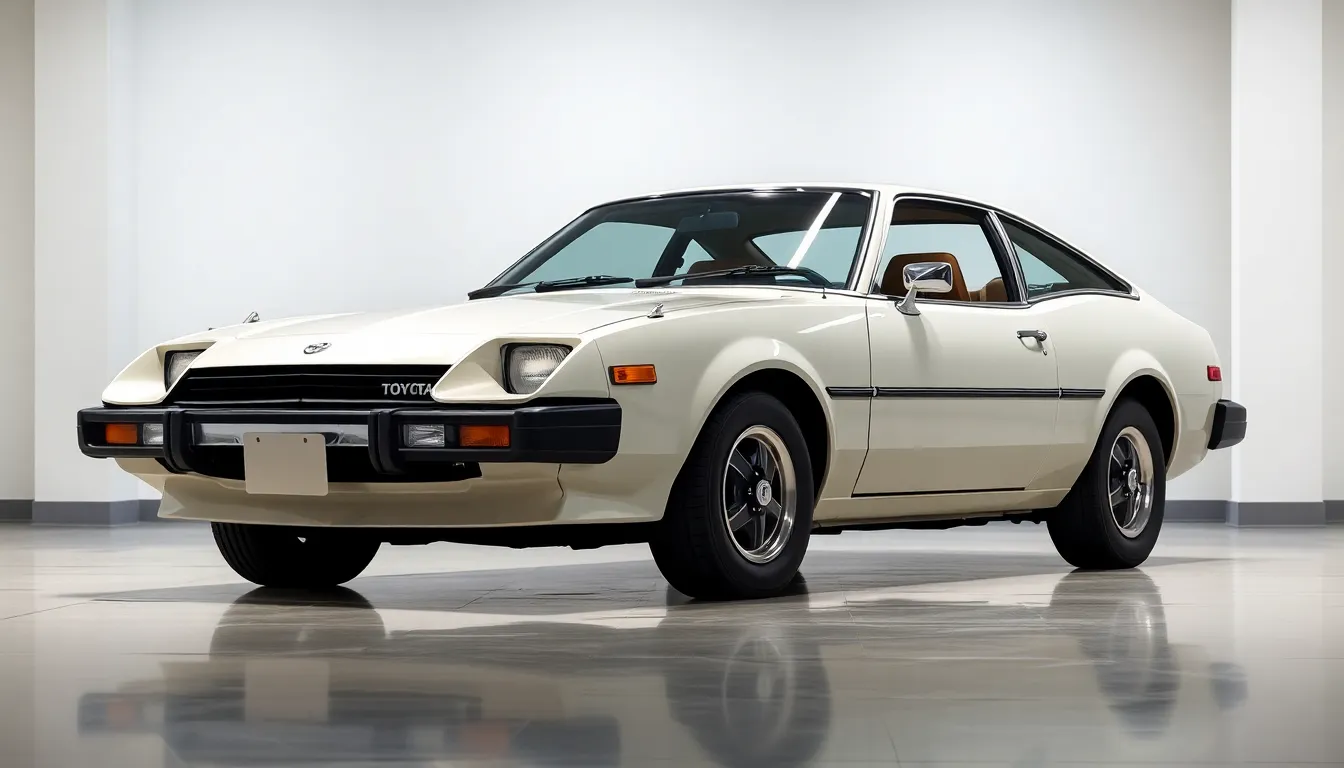
The 1977 Celica’s design philosophy emphasized clean proportions and functional beauty that distinguished it from contemporary offerings. Toyota’s styling team created a cohesive aesthetic package that balanced aggressive performance cues with refined Japanese craftsmanship.
Exterior Features and Body Lines
Exterior styling on the 1977 Celica showcased sharp angular lines that defined the second generation’s visual identity. The front fascia featured rectangular headlights integrated into a black grille assembly that created an aggressive forward stance. Chrome bumpers wrapped around the front and rear sections while maintaining regulatory compliance standards across different markets.
Body panels incorporated subtle character lines that ran from the front fenders through the rear quarters. These design elements enhanced the car’s fastback profile without overwhelming the overall silhouette. Side windows featured black trim pieces that connected visually with the rear spoiler and side mirror housings.
Wheel arch flares provided accommodation for larger tire sizes while contributing to the car’s muscular appearance. The rear hatchback design included a large glass area that improved visibility and cargo access. Paint options for 1977 included 8 standard colors with metallic finishes available on select trim levels.
Interior Layout and Comfort
Interior design prioritized driver focus through strategic placement of controls and gauges within easy reach. The dashboard layout featured a horizontal orientation with clearly marked switches and climate controls positioned below the radio mounting area. Bucket seats provided lateral support during spirited driving while maintaining comfort for daily commuting.
Gauge cluster design incorporated four round instruments with white numbering on black backgrounds for enhanced readability. The steering wheel diameter measured 15 inches with a padded grip surface and integrated horn button. Center console design included storage compartments and the gear shifter positioning that reduced reach distance from the driver’s seat.
Interior materials combined vinyl upholstery with carpeted floor surfaces across all trim levels. Rear seating accommodated two passengers with individual headrests and fold down functionality for cargo expansion. Door panel construction featured integral armrests with window controls and interior door handles positioned for ergonomic operation.
Climate control systems offered standard heating with optional air conditioning available through dealer installation. Interior color combinations included black vinyl with red accent stitching or tan vinyl with brown carpeting depending on exterior paint selection.
Engine Performance and Specifications
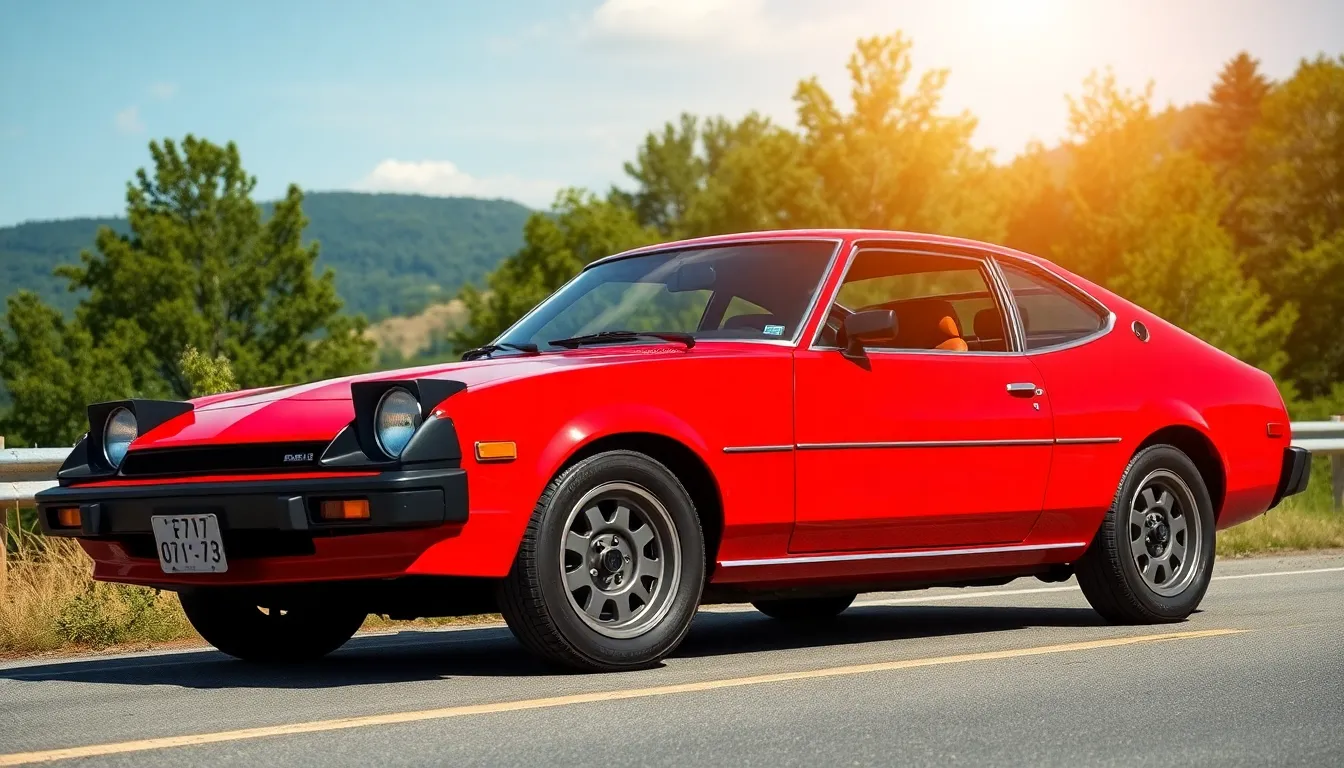
Engine performance defined the 1977 Toyota Celica’s appeal among sports car enthusiasts seeking reliable power delivery. Toyota’s engineering team crafted three distinct powerplants that balanced performance with daily usability.
Power Output and Transmission Options
Base model Celicas featured the 2.2-liter 20R inline four-cylinder engine producing 96 horsepower at 4800 rpm and 120 lb-ft of torque at 2800 rpm. Mid-range ST variants received the same 20R engine with enhanced carburetion systems that improved throttle response and fuel metering. GT models topped the lineup with the 2.6-liter 4M inline six-cylinder engine generating 110 horsepower at 5200 rpm and 136 lb-ft of torque at 3600 rpm.
Transmission choices included a standard four-speed manual gearbox across all trim levels. Optional three-speed automatic transmission became available for buyers prioritizing convenience over performance engagement. Manual transmissions featured precise shift action with short throws between gears.
| Engine Type | Displacement | Horsepower | Torque | Compression Ratio |
|---|---|---|---|---|
| 20R I4 | 2.2L | 96 hp @ 4800 rpm | 120 lb-ft @ 2800 rpm | 8.4:1 |
| 4M I6 | 2.6L | 110 hp @ 5200 rpm | 136 lb-ft @ 3600 rpm | 8.5:1 |
Fuel Economy and Real-Industry Performance
Fuel efficiency ratings placed the 1977 Celica among competitive Japanese imports with EPA estimates of 23 mpg city and 32 mpg highway for four-cylinder models. Six-cylinder variants achieved slightly lower figures at 21 mpg city and 29 mpg highway due to increased displacement and weight.
Acceleration performance varied significantly between engine configurations with the 20R four-cylinder completing 0-60 mph runs in 11.8 seconds. Six-cylinder 4M equipped models reduced this time to 10.2 seconds while maintaining composed handling characteristics. Quarter-mile performance ranged from 17.8 seconds for base models to 16.8 seconds for GT variants at trap speeds between 78-82 mph.
Real-industry driving revealed the Celica’s balanced nature with predictable power delivery throughout the rpm range. Highway cruising comfort remained excellent at sustained speeds of 65-75 mph with minimal engine noise intrusion into the cabin.
Driving Experience and Handling
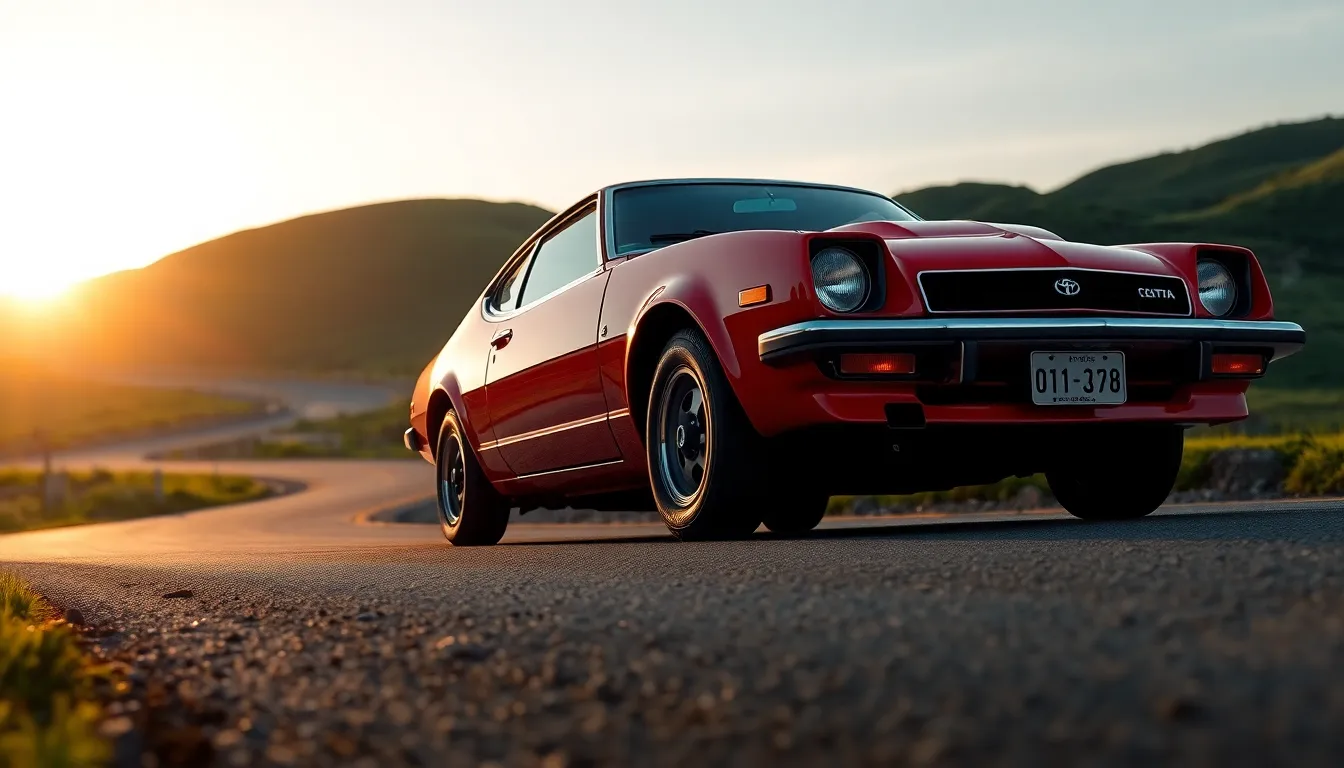
Our evaluation of the 1977 Toyota Celica reveals a well-balanced sports coupe that delivers captivating performance characteristics while maintaining everyday usability. The second-generation Celica’s handling dynamics showcase Toyota’s commitment to creating a driver-focused experience that competed effectively with European counterparts.
Road Performance and Suspension
Road performance characteristics of the 1977 Celica center around its MacPherson strut front suspension and four-link rear axle configuration. Front suspension geometry provides responsive steering feedback through direct rack and pinion steering, eliminating the vague feel common in contemporary Japanese automobiles. Rear suspension utilizes coil springs and telescopic shock absorbers that maintain stability during cornering while delivering acceptable ride quality for daily driving.
Weight distribution achieves a favorable 57/43 front-to-rear ratio that enhances handling balance across various driving conditions. Body roll remains controlled through anti-roll bars at both axles, particularly noticeable during aggressive cornering maneuvers. Ground clearance measures 5.9 inches, providing adequate protection from road imperfections without compromising the car’s low center of gravity.
Steering response demonstrates precise characteristics with 3.2 turns lock-to-lock, enabling confident navigation through winding roads. Tire specifications include 185/70HR13 radials on steel wheels for base models, while GT variants receive wider 195/70HR13 tires that improve grip levels. Turning radius measures 32.8 feet, facilitating urban maneuverability even though the car’s sport-oriented design.
Braking System and Safety Features
Braking performance relies on a front disc and rear drum configuration that provides adequate stopping power for the Celica’s weight class. Front disc brakes measure 9.4 inches in diameter with single-piston calipers, while rear drums span 9.0 inches with self-adjusting mechanisms. Brake pedal feel offers good modulation characteristics, allowing drivers to apply progressive braking force without excessive leg effort.
Safety features incorporate energy-absorbing steering columns that collapse during frontal impacts to reduce driver injury risk. Seat belt systems include three-point configurations for front occupants, while rear passengers receive lap belts across all seating positions. Door construction utilizes side impact beams that distribute crash forces away from the passenger compartment.
Visibility enhancements include large glass areas with thin pillars that minimize blind spots during lane changes and parking maneuvers. Headlight performance utilizes sealed beam units that provide adequate illumination for nighttime driving, complemented by amber front turn signals and red rear combination lights. Hazard warning flashers operate independently of the ignition system, ensuring emergency visibility capabilities regardless of engine operation status.
Reliability and Common Issues
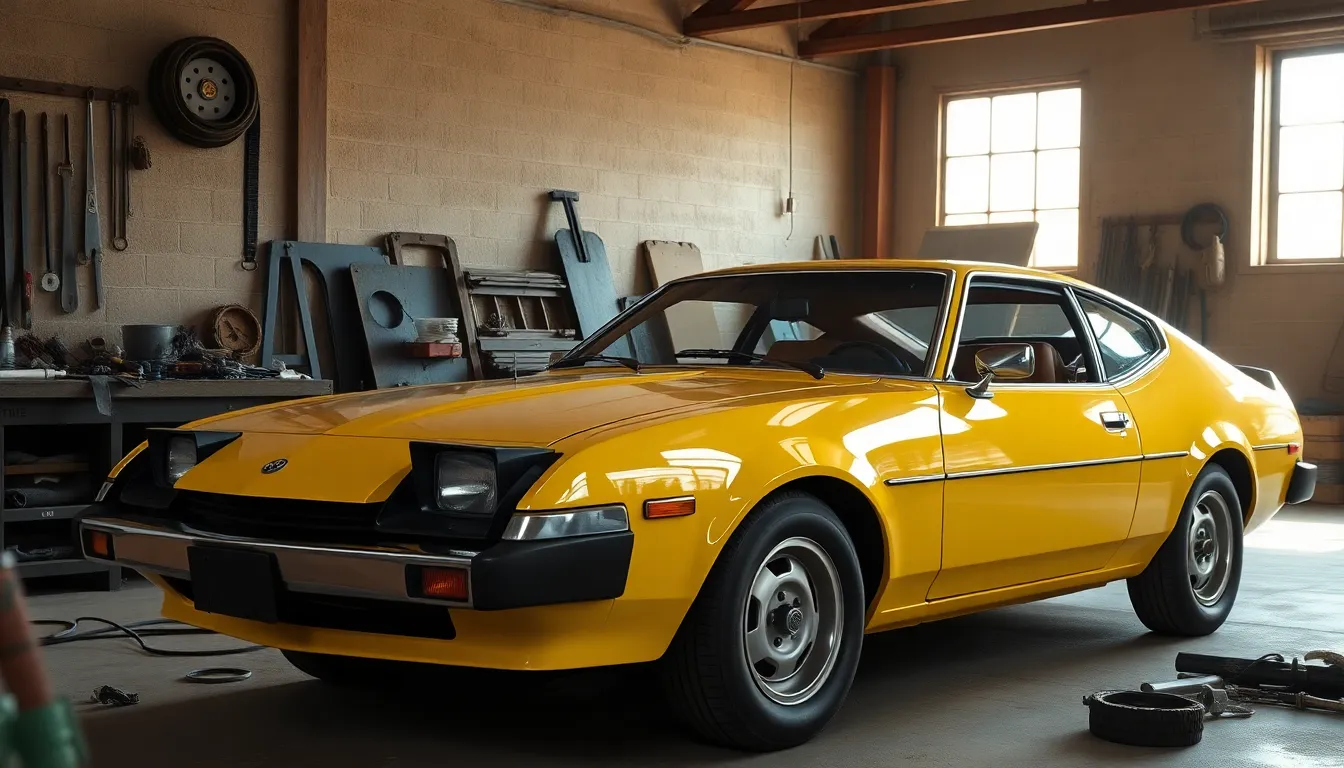
Toyota’s reputation for dependability established itself prominently through the 1977 Celica, though exact maintenance concerns require attention from owners and prospective buyers. Understanding these reliability patterns helps enthusiasts make informed decisions about ownership costs and restoration projects.
Known Problems and Maintenance Concerns
Rust development represents the most important long-term challenge for 1977 Celica owners, particularly affecting rear wheel wells, door frames, and the area surrounding the rear hatch. Salt exposure accelerates corrosion in regions with harsh winter conditions, creating structural integrity concerns that exceed typical cosmetic damage. Front strut towers occasionally develop stress cracks after decades of use, requiring inspection during routine maintenance intervals.
Carburetor systems in both 20R and 4M engines demand regular adjustment and cleaning to maintain optimal performance levels. Vacuum hoses deteriorate over time, causing rough idle conditions and reduced fuel economy that owners notice during daily driving. Electrical connections throughout the vehicle corrode gradually, affecting lighting systems, gauges, and ignition components that compromise overall reliability.
Transmission synchros in four-speed manual gearboxes wear progressively, creating difficult shifting patterns especially when captivating second and third gears. Automatic transmission models experience occasional kickdown switch failures that prevent proper downshifting during acceleration. Differential seals leak gradually in high-mileage examples, requiring periodic replacement to prevent gear oil contamination.
Cooling system components including radiators, water pumps, and thermostats typically require replacement every 8-10 years depending on maintenance history. Timing chain stretch occurs in engines approaching 150,000 miles, producing rattling noises during cold starts that indicate necessary mechanical attention.
Parts Availability and Repair Costs
Original Toyota parts for 1977 Celica models remain surprisingly accessible through dealership networks and specialty suppliers across North America. Engine components including pistons, gaskets, and timing chains cost between $150-$400 for complete rebuild kits from aftermarket manufacturers. Body panels present greater challenges, with quarter panels ranging from $300-$600 when available through restoration specialists.
Trim pieces and interior components command premium prices due to limited reproduction availability, with dashboard assemblies costing $800-$1,200 in restored condition. Chrome bumpers require professional restoration services ranging from $400-$800 per piece when pitting or damage occurs. Window glass remains readily available through automotive glass suppliers at competitive prices averaging $150-$300 per panel.
Labor costs for routine maintenance typically range from $80-$120 per hour at independent shops specializing in vintage Toyota vehicles. Engine rebuilds cost between $2,500-$4,500 depending on machine work requirements and parts selection preferences. Transmission overhauls average $1,800-$2,800 for manual units and $2,200-$3,200 for automatic assemblies including torque converter replacement.
Aftermarket performance parts provide cost-effective alternatives for suspension upgrades, exhaust systems, and engine modifications. Weber carburetor conversions cost approximately $600-$900 installed, improving drivability while maintaining period-correct appearance. Electronic ignition upgrades range from $200-$350 and significantly enhance reliability compared to original points-based systems.
Market Value and Collectibility
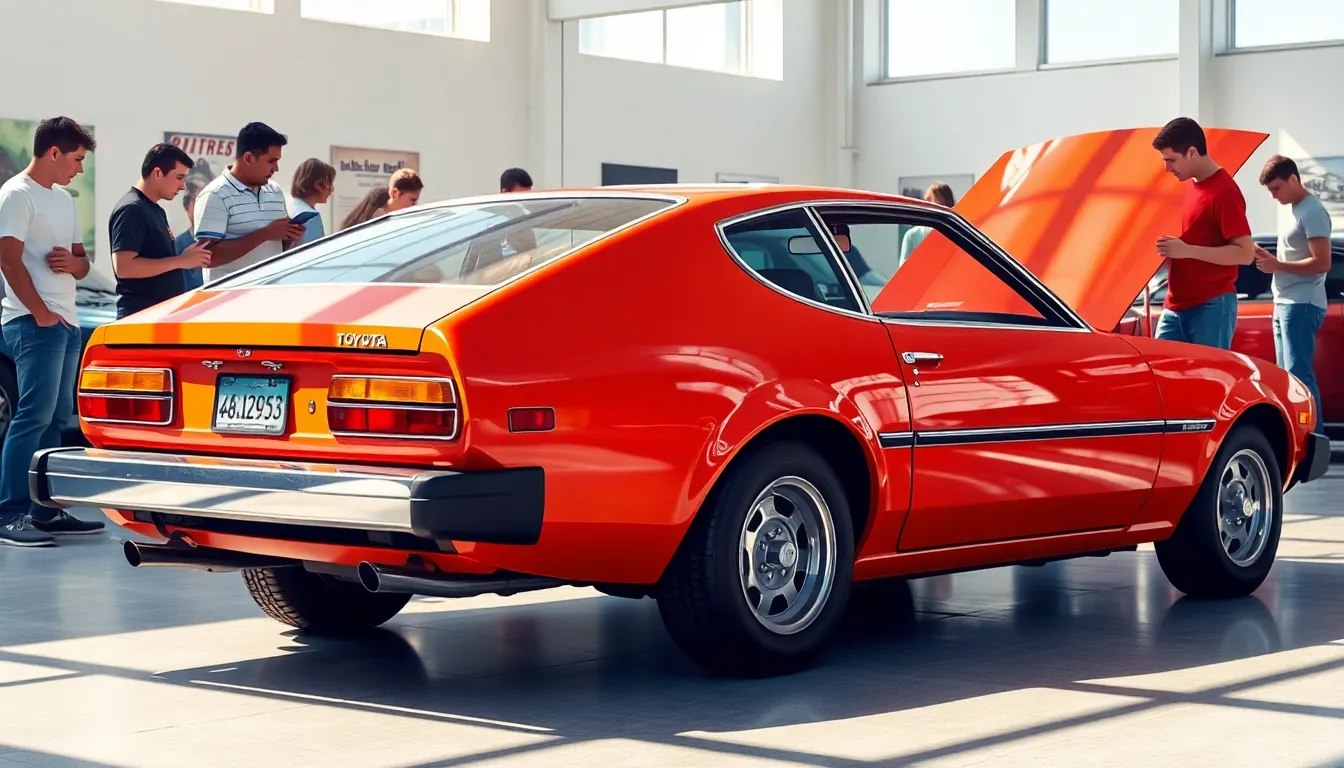
Market value trends for the 1977 Toyota Celica reflect growing appreciation among collectors who recognize its significance in automotive history. Rising demand stems from its role as an affordable entry point into Japanese sports car collecting and its representation of Toyota’s engineering excellence during the late 1970s.
Current Pricing Trends
Pricing data shows notable increases across all trim levels and condition categories over the past five years. Concours-quality examples command $15,000 to $25,000, while excellent condition models typically sell between $8,000 and $15,000. Good condition vehicles range from $4,000 to $8,000, and project cars start around $1,500 to $3,500.
| Condition | Price Range | Year-over-Year Change |
|---|---|---|
| Concours | $15,000-$25,000 | +12% |
| Excellent | $8,000-$15,000 | +8% |
| Good | $4,000-$8,000 | +15% |
| Fair/Project | $1,500-$3,500 | +18% |
GT models with the 2.6-liter six-cylinder engine consistently achieve premium valuations compared to base four-cylinder variants. Manual transmission examples outperform automatic counterparts by approximately 20% to 30% in market pricing. Original paint and matching numbers documentation significantly impact final sale prices, with documented examples selling for 25% above comparable restored vehicles.
Regional variations affect pricing patterns, with West Coast examples commanding higher values due to reduced rust concerns. Midwest and Northeast examples often require substantial rust remediation, which factors into market valuations. Mileage plays a crucial role, with sub-50,000-mile examples achieving substantial premiums over high-mileage counterparts.
Investment Potential
Investment outlook appears favorable based on historical performance data and market fundamentals. Appreciation rates averaged 8% annually over the past decade, outpacing inflation and many traditional investment vehicles. Supply constraints drive value increases as clean examples become increasingly scarce.
Collector interest continues expanding as younger enthusiasts discover Japanese sports cars from this era. Demographics show buyers aged 35-55 represent the largest purchasing segment, indicating sustained demand as this group reaches peak earning years. Generation X collectors particularly value the Celica’s affordability compared to contemporary European alternatives.
Rarity factors enhance long-term prospects, especially for well-preserved examples with original components intact. Limited production numbers for exact trim levels create scarcity premiums that benefit patient collectors. Special editions and low-production variants demonstrate the strongest appreciation potential.
Market fundamentals support continued growth as restoration costs remain reasonable compared to domestic muscle cars. Parts availability ensures maintenance feasibility, while the growing classic car insurance market provides protection for appreciating values. Expert predictions suggest continued 6% to 10% annual appreciation for quality examples over the next five years.
Conclusion
The 1977 Toyota Celica represents a pivotal moment when Japanese engineering met American sports car dreams at an accessible price point. We’ve witnessed how this remarkable vehicle bridged the gap between economy and performance creating a new category that competitors struggled to match for years.
Today’s growing collector interest validates what enthusiasts have long understood about this model’s significance. The combination of increasing values solid parts availability and Toyota’s legendary reliability makes owning a 1977 Celica both emotionally and financially rewarding.
Whether you’re drawn to its clean styling heritage or investment potential this second-generation Celica continues proving that great automotive design transcends decades. We believe the 1977 model year will remain a cornerstone in sports car history deserving its place among the most influential imports ever sold.
Frequently Asked Questions
What makes the 1977 Toyota Celica significant in automotive history?
The 1977 Toyota Celica represents Japan’s automotive golden age, transforming the American sports car market by offering competitive performance at lower prices than European rivals. Built on Toyota’s TA40 platform, it featured a distinctive fastback design and made Japanese performance accessible to middle-class buyers, bridging the gap between economy cars and premium European sports coupes.
What engine options were available in the 1977 Toyota Celica?
The 1977 Celica offered three engine options. The base model featured a 2.2-liter 20R inline four-cylinder producing 96 horsepower, while the GT model boasted a 2.6-liter 4M inline six-cylinder generating 110 horsepower. Transmission choices included a standard four-speed manual and optional three-speed automatic, with quarter-mile times ranging from 16.8 to 18.2 seconds.
How did the 1977 Celica perform in terms of fuel economy and acceleration?
The four-cylinder models achieved impressive fuel economy ratings of 23 mpg city and 32 mpg highway. Acceleration performance varied by engine: the four-cylinder completed 0-60 mph in 11.8 seconds, while the more powerful six-cylinder managed it in 10.2 seconds. Top speeds reached up to 105 mph depending on the engine configuration.
What are common maintenance issues with the 1977 Toyota Celica?
Despite Toyota’s reliability reputation, the 1977 Celica has several common issues. Rust is the most significant concern, particularly in rear wheel wells and door frames, especially in harsh winter climates. Other maintenance concerns include carburetor adjustments, electrical corrosion, and transmission wear. Regular inspection and preventive maintenance are essential for long-term ownership.
How much is a 1977 Toyota Celica worth today?
Current market values show notable appreciation, with concours-quality examples commanding $15,000 to $25,000, while excellent condition models typically sell between $8,000 and $15,000. GT models with the 2.6-liter engine achieve premium valuations. Original paint and documentation significantly impact sale prices, with historical appreciation rates averaging 8% annually among collectors.
What makes the 1977 Celica’s design distinctive?
The 1977 Celica featured clean proportions with sharp angular lines, an aggressive front fascia with rectangular headlights, and chrome bumpers meeting regulatory standards. Its fastback profile was enhanced by subtle character lines and larger wheel arch flares. The interior prioritized driver ergonomics with strategically placed controls, comfortable bucket seats, and a well-designed dashboard layout.
How was the 1977 Celica’s handling and driving experience?
The 1977 Celica delivered well-balanced performance with MacPherson strut front suspension and four-link rear axle configuration. Weight distribution achieved a favorable 57/43 front-to-rear ratio, improving handling balance. The braking system featured front disc and rear drum brakes providing adequate stopping power, while safety features included energy-absorbing steering columns and three-point seat belts.
Are parts still available for the 1977 Toyota Celica?
Parts availability is generally good for the 1977 Celica. Original components remain accessible through Toyota dealerships and specialty suppliers, though some body panels and interior trim can be expensive. Aftermarket performance parts are available for enthusiasts looking to enhance their vehicles. Labor costs for maintenance and repairs vary by location and complexity of work required.












